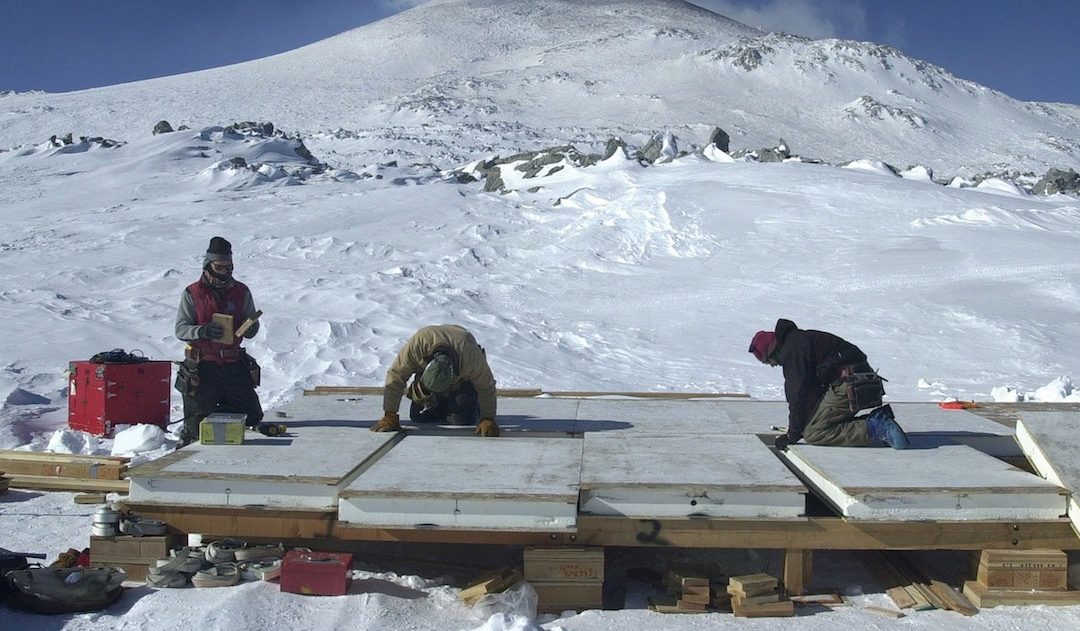The cold weather brings with it a number of additional safety challenges. Here are a few things you can do protect yourself and your team as the temperature drops and risk increases.
Understand Cold Stress
Cold weather presents two major risks: hypothermia and frostbite. Without proper protection, overexposure to cold temperatures can cause physical harm and sometimes death.
Cold stress doesn’t only occur in sub-zero temperatures, either. Working in windy conditions, working when exhausted, or wearing wet clothes can increase risk. If a worker has hypothyroidism, hypertension, or diabetes it may increase their risk. Poor physical conditioning can also lead to cold stress.
Frostbite
When it is cold, the body directs heat to the body’s core. As a result, the tissues of extremities such as fingers, toes, the nose, cheeks, and ears can freeze. This can cause permanent damage and loss of mobility. In the worst cases, physicians must amputate afflicted areas.
Unfortunately, the National Weather Service estimates at zero degrees Fahrenheit with a wind of just 15 mph a worker can experience frostbite in as little as 30 minutes. As wind speeds increases, and temperatures drop, this happens much quicker.
Hypothermia
Hypothermia occurs when body temperature drops below 95°F. It is more likely to occur in very cold temperatures, but wet clothing, sweat, or submersion in water can cause hypothermia at temperatures above 40°F.
Mild hypothermia can cause symptoms which impact safety and work quality. For instance, it can cause workers to become apathetic and reduce focus. It can also affect their decision-making skills which can lead to accidents and injuries. They can also become unsteady, lose their balance, and even struggle to walk or communicate.
Severe hypothermia causes muscles to stiffen, slows breathing and pulse, and can cause weakness, sleepiness, confusion, and sometimes loss of consciousness or even death.
Establish Workplace Safety Guidelines
Companies should establish comprehensive workplace safety guidelines and workplace practices for cold environments. By actively encouraging and enforcing adherence, providing appropriate engineering controls and personal protective equipment when necessary you can greatly reduce risk.
Cold Stress Training
Training managers, supervisors and workers so they can recognize the symptoms of hypothermia and frostbite is crucial to workplace safety. Cold stress training, including first aid, saves lives and limits physical damage.
Supervisors and workers must know how to prevent and recognize cold stress illnesses and injuries, treat problems when they occur, and seek medical assistance in the quickest manner possible.
Schedule Work Properly
Supervisors can gradually introduce workers to cold environments so they’re bodies can acclimate. They can ensure work schedules allow sufficient time and an area for workers to warm up during their breaks. When possible, supervisors can also schedule the heaviest workload for the warmest part of the day.
Supervisors should provide additional breaks if an employee expresses discomfort as each employee’s ability to handle cold differs. Employers may want to assign in pairs too, so they can monitor performance and watch for signs of cold stress.
Provide Heaters & Barriers
Employers can also provide barriers to shield workers from the wind. Wind chill is often the principle factor in frostbite and hypothermia.
Simply providing shelter may not restore a worker’s body temperature to normal. Employers should consider radiant heaters in rest areas and offer hot drinks such as coffee and tea, too.
Use Personal Protection Equipment
Cold weather constricts blood vessels and impedes blood flow making it more difficult for workers to grip tools and materials and use them properly. Consequently, workers may remove safety equipment such as gloves when it restricts their abilities.
OSHA suggests supervisors encourage employees to use personal protection equipment, enforce regulations when they don’t, and train employees so they understand their importance. Supervisors must show interest in employee welfare, investigate potential problems, and set an example by using PPE too.
Employers are responsible for a safe workplace free of hazards, including cold stress. By monitoring workers for symptoms of cold stress, providing PPE and a warm place for breaks, using proper engineering controls, and following safe work practices you can reduce cold-stress risk.


